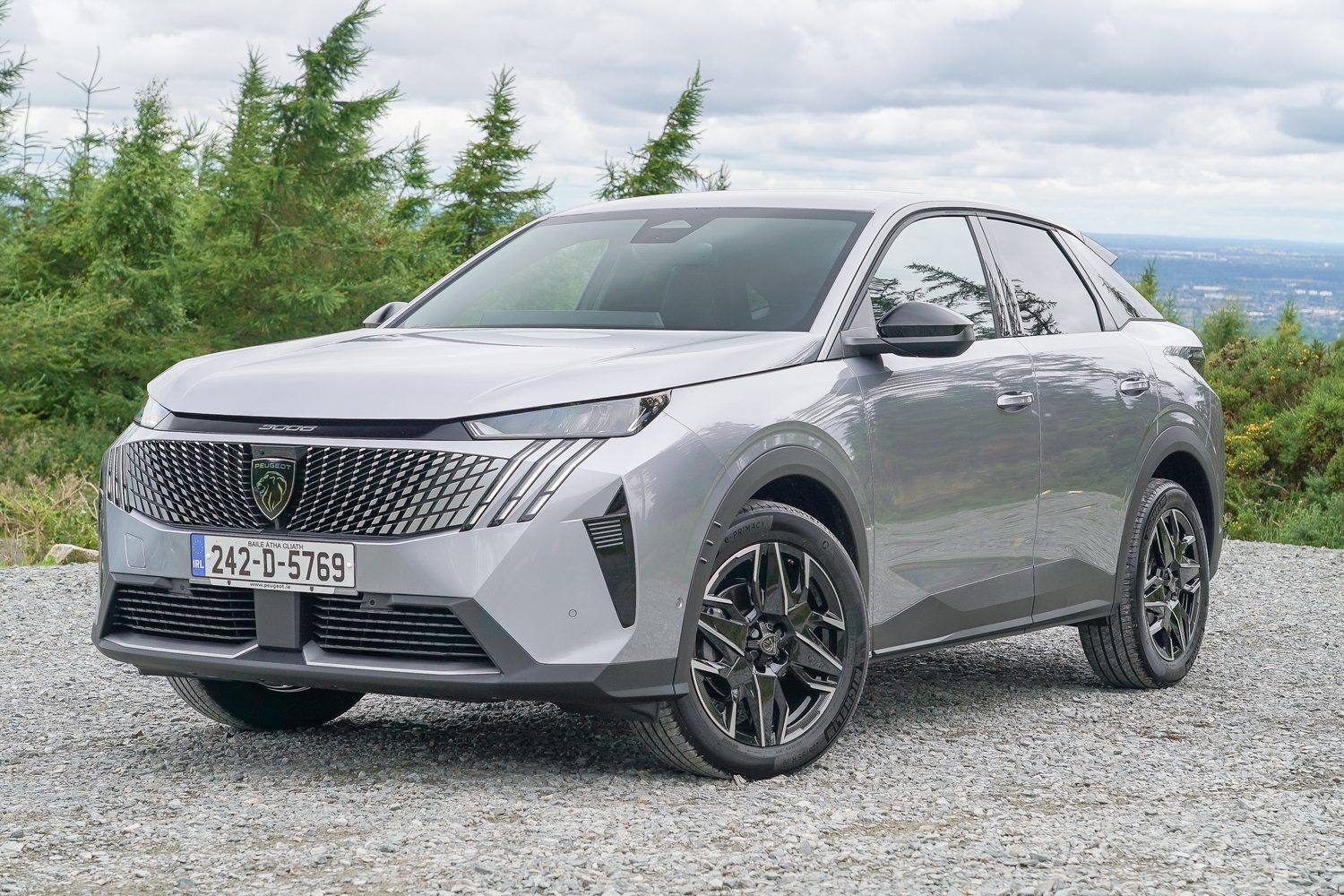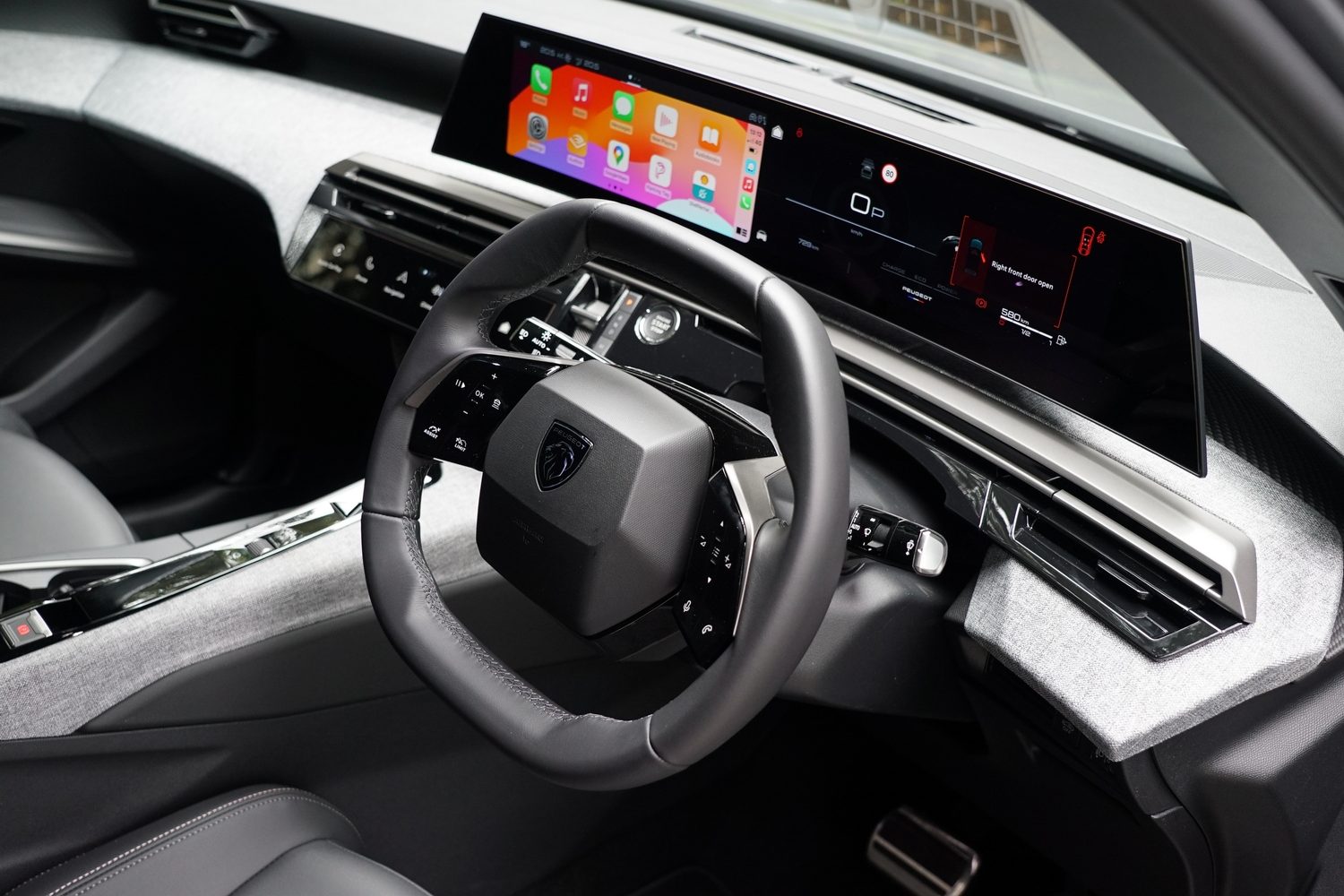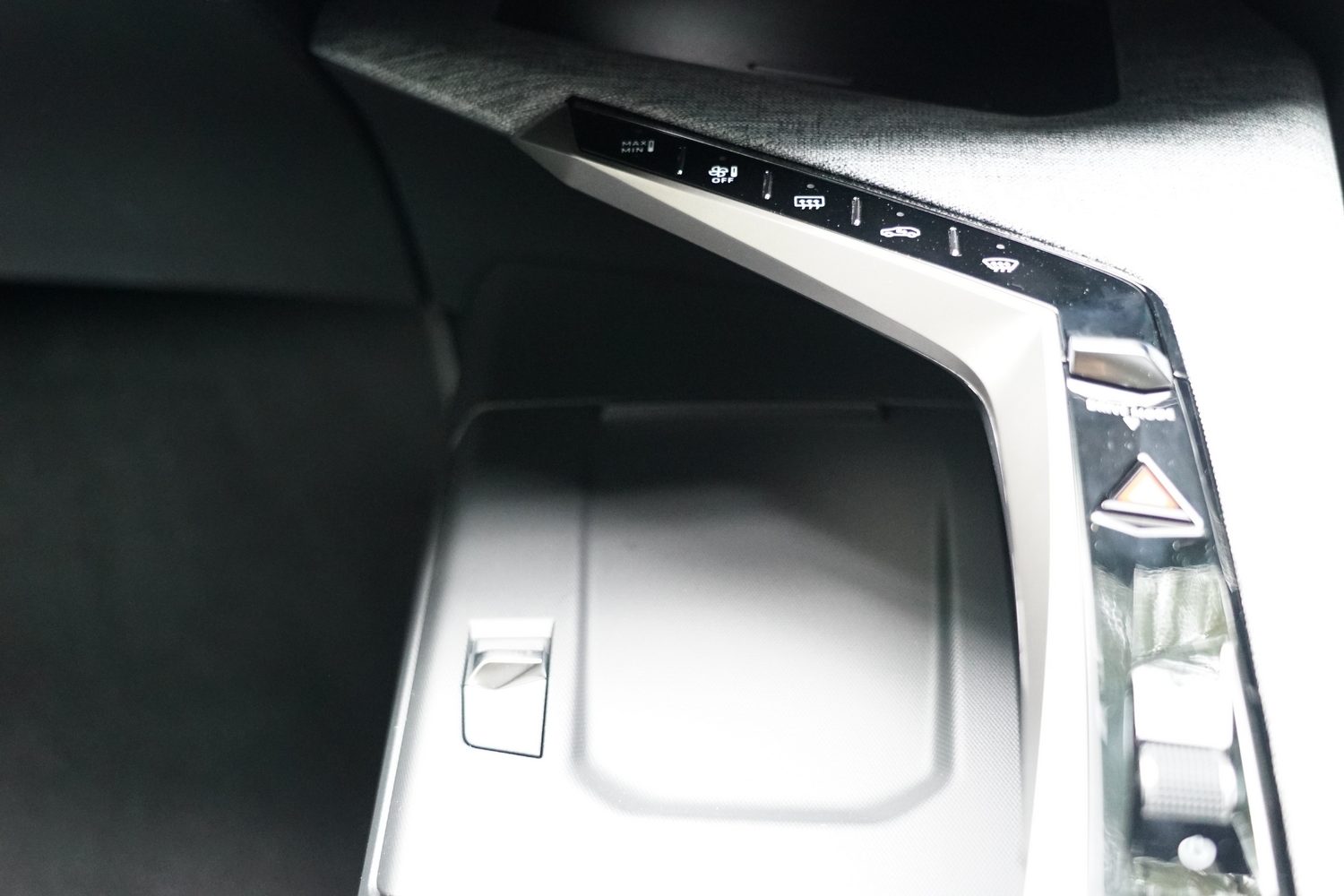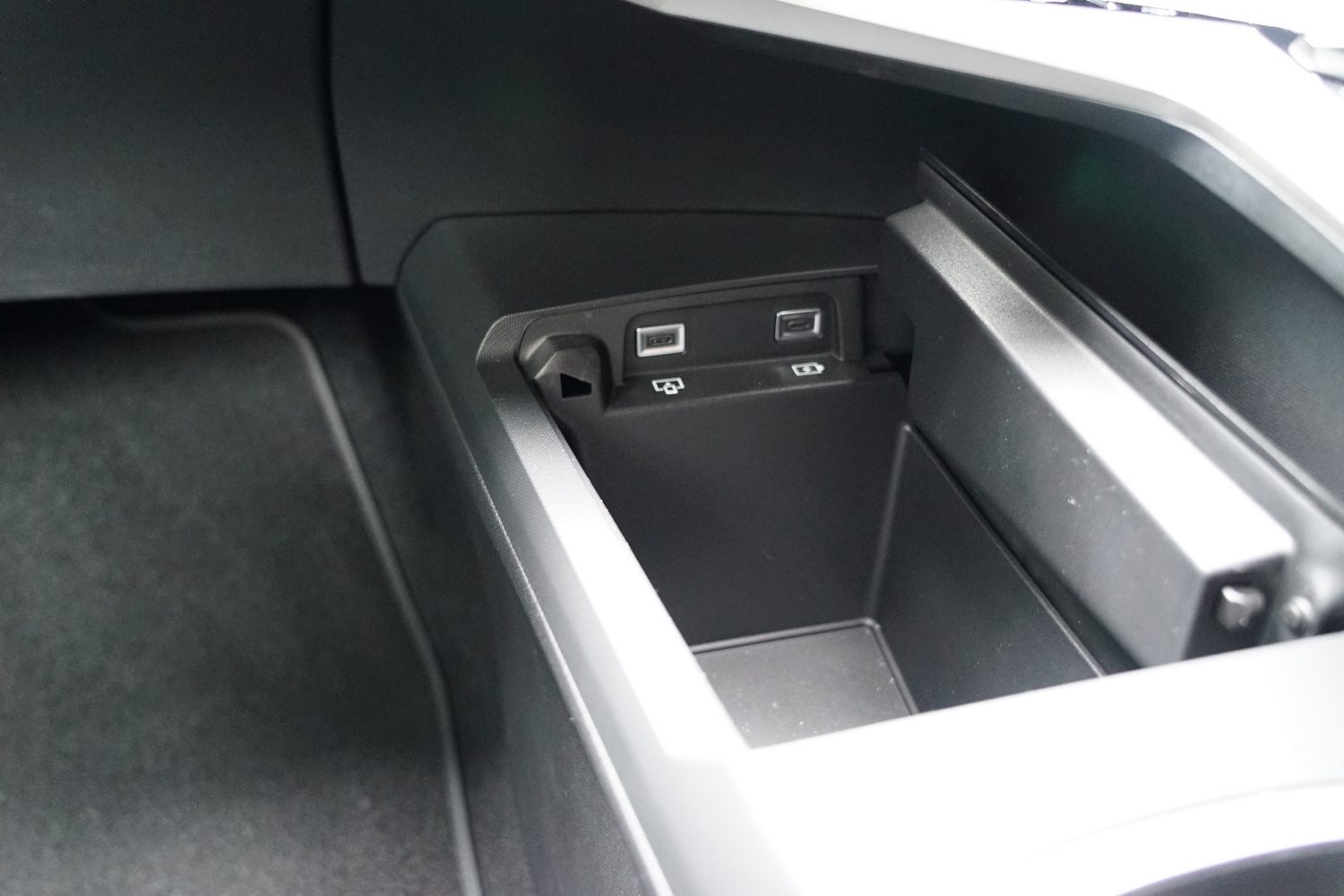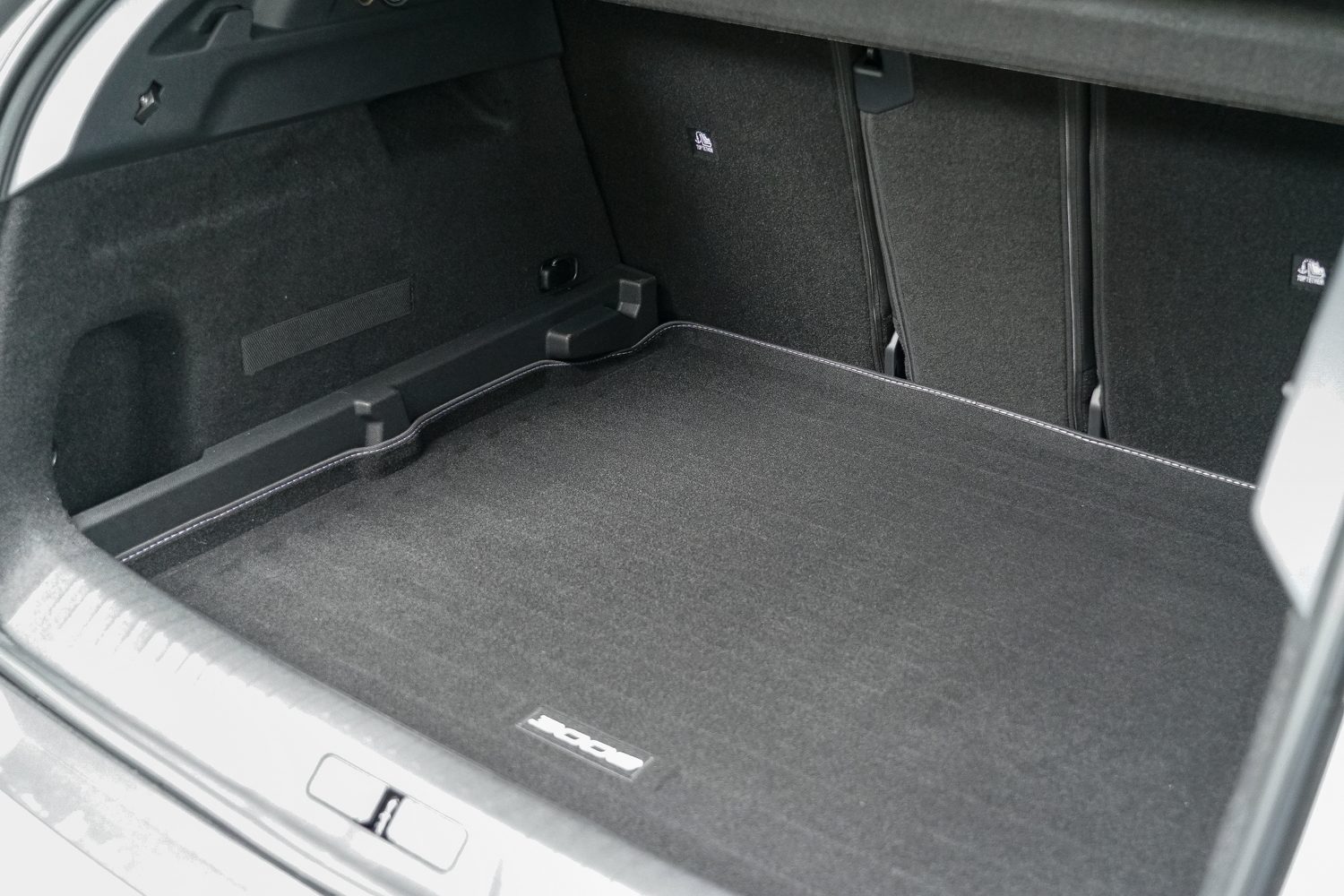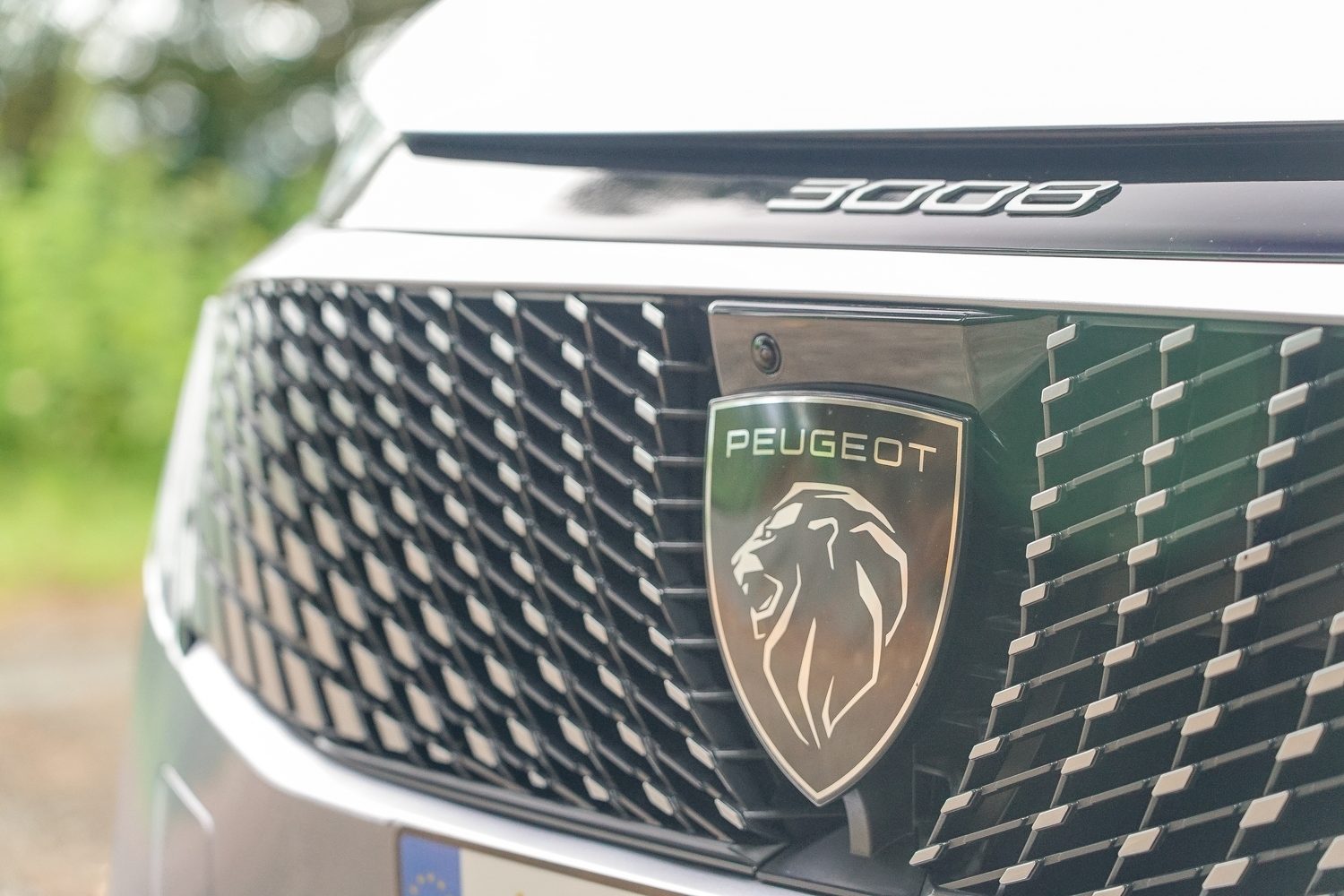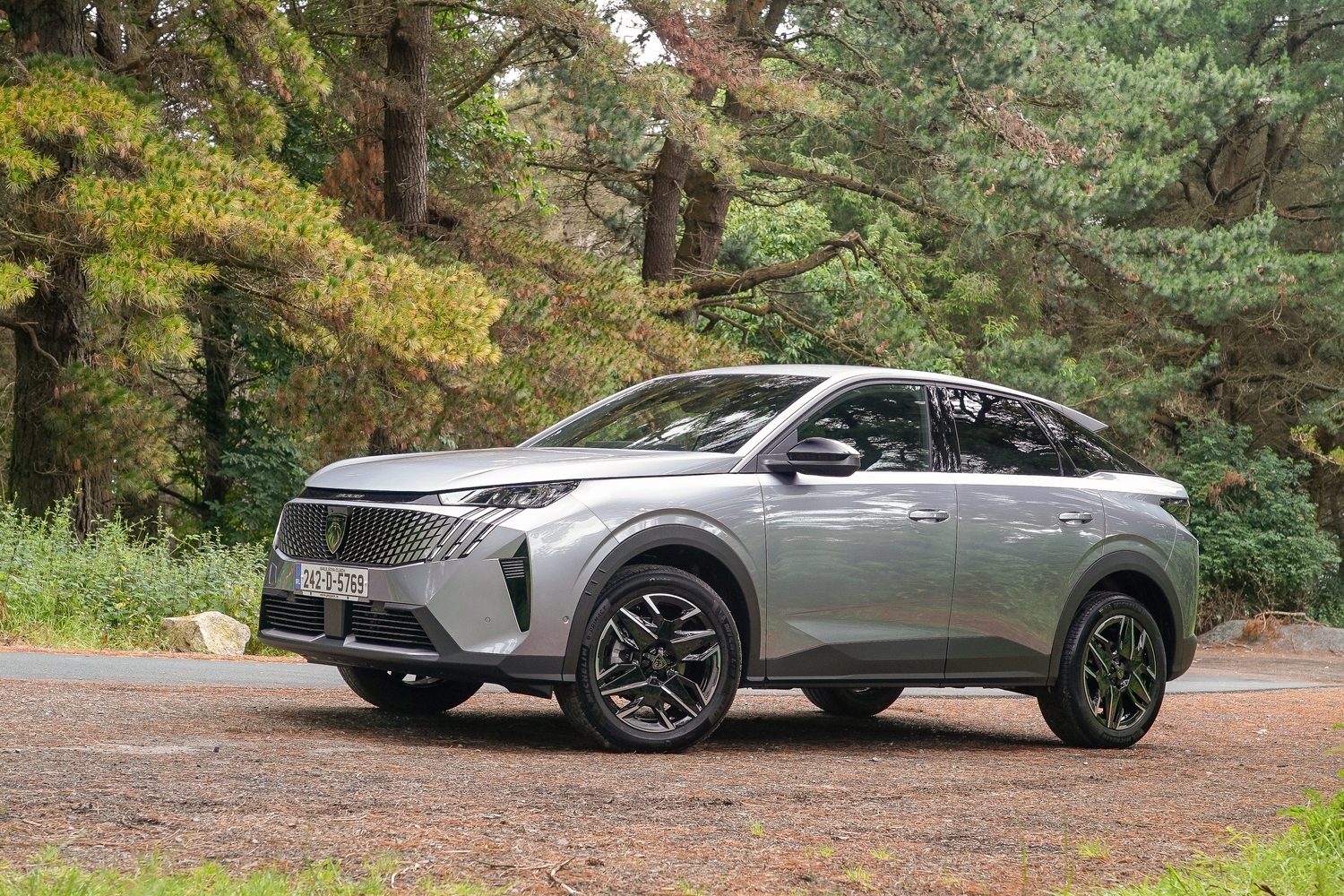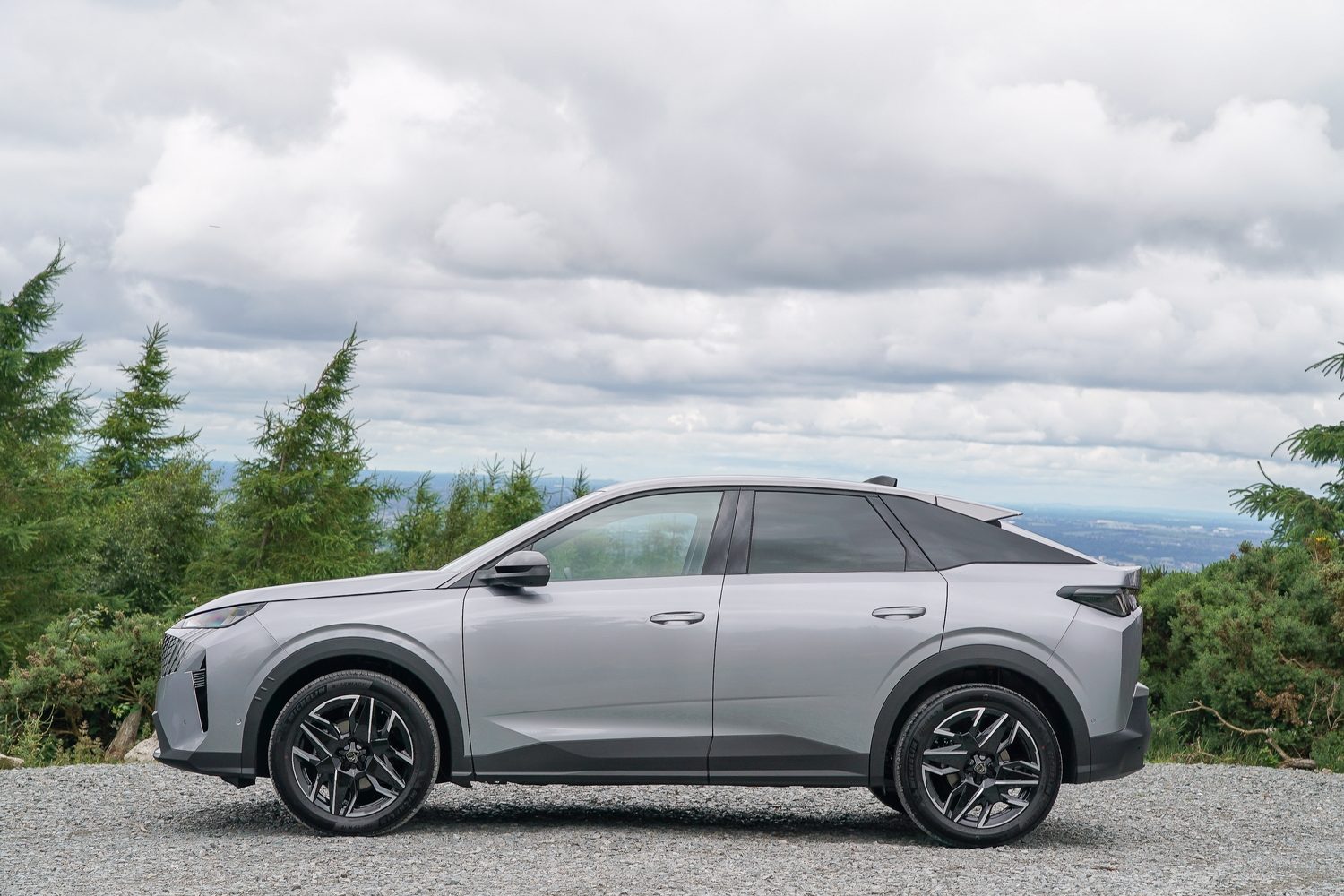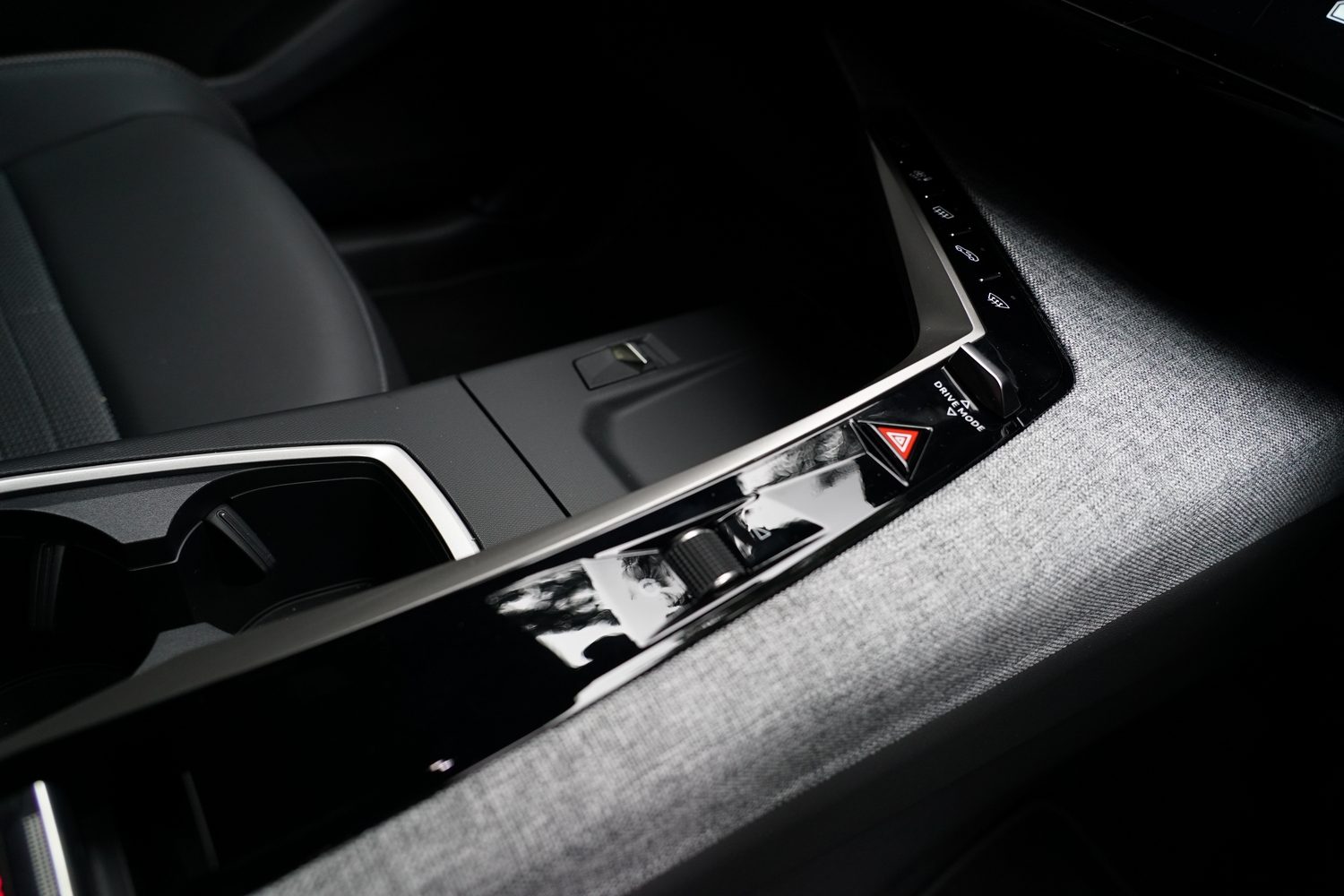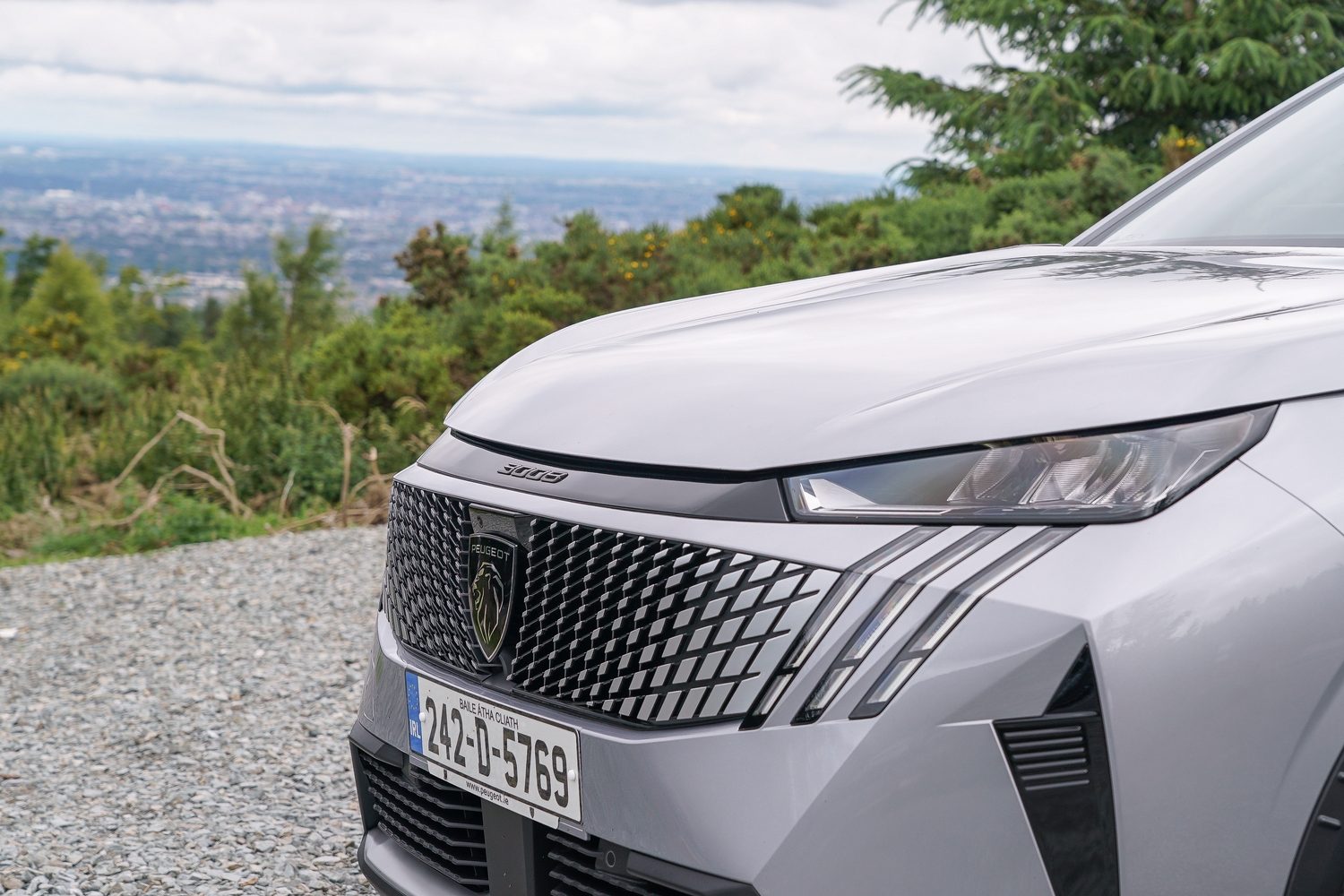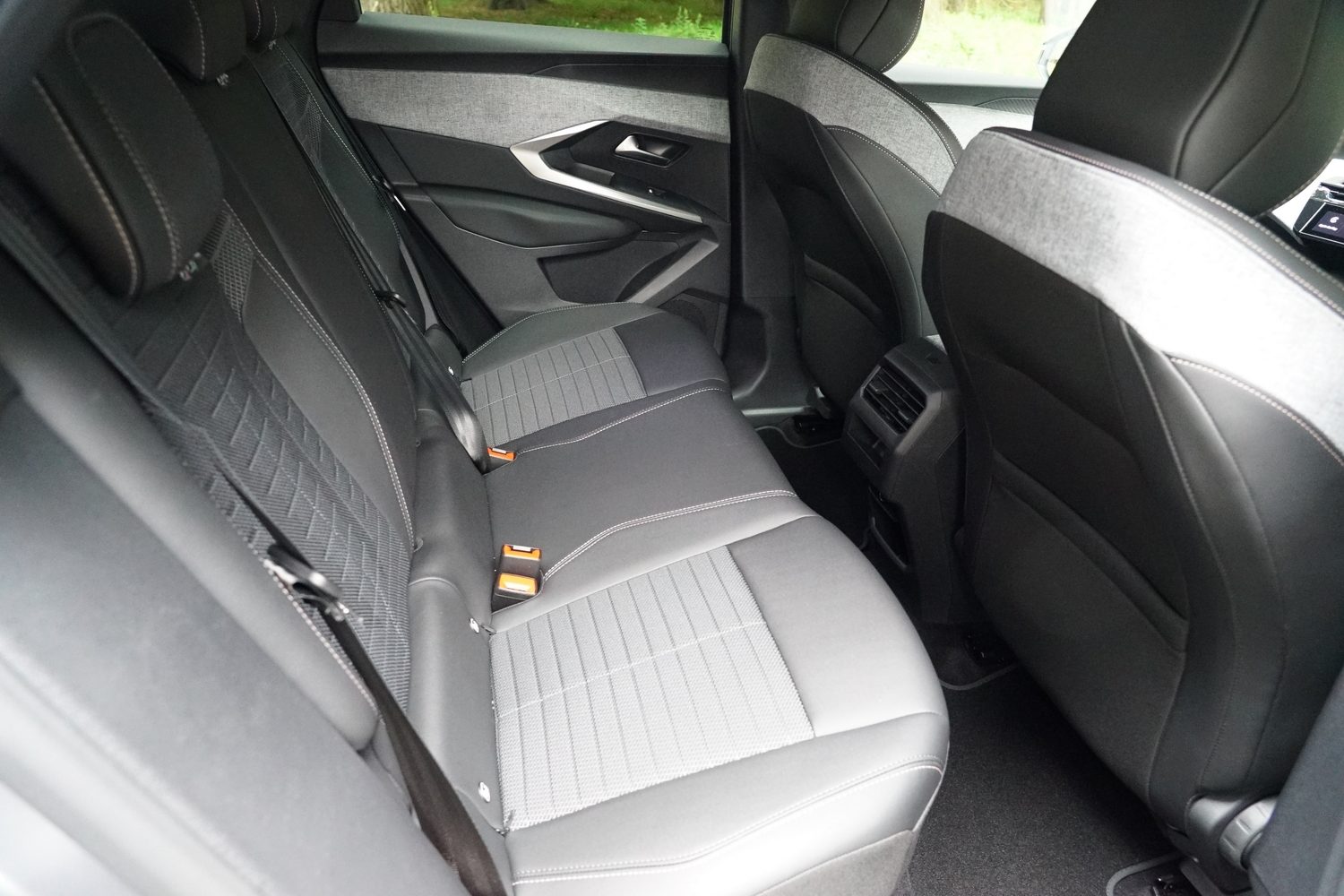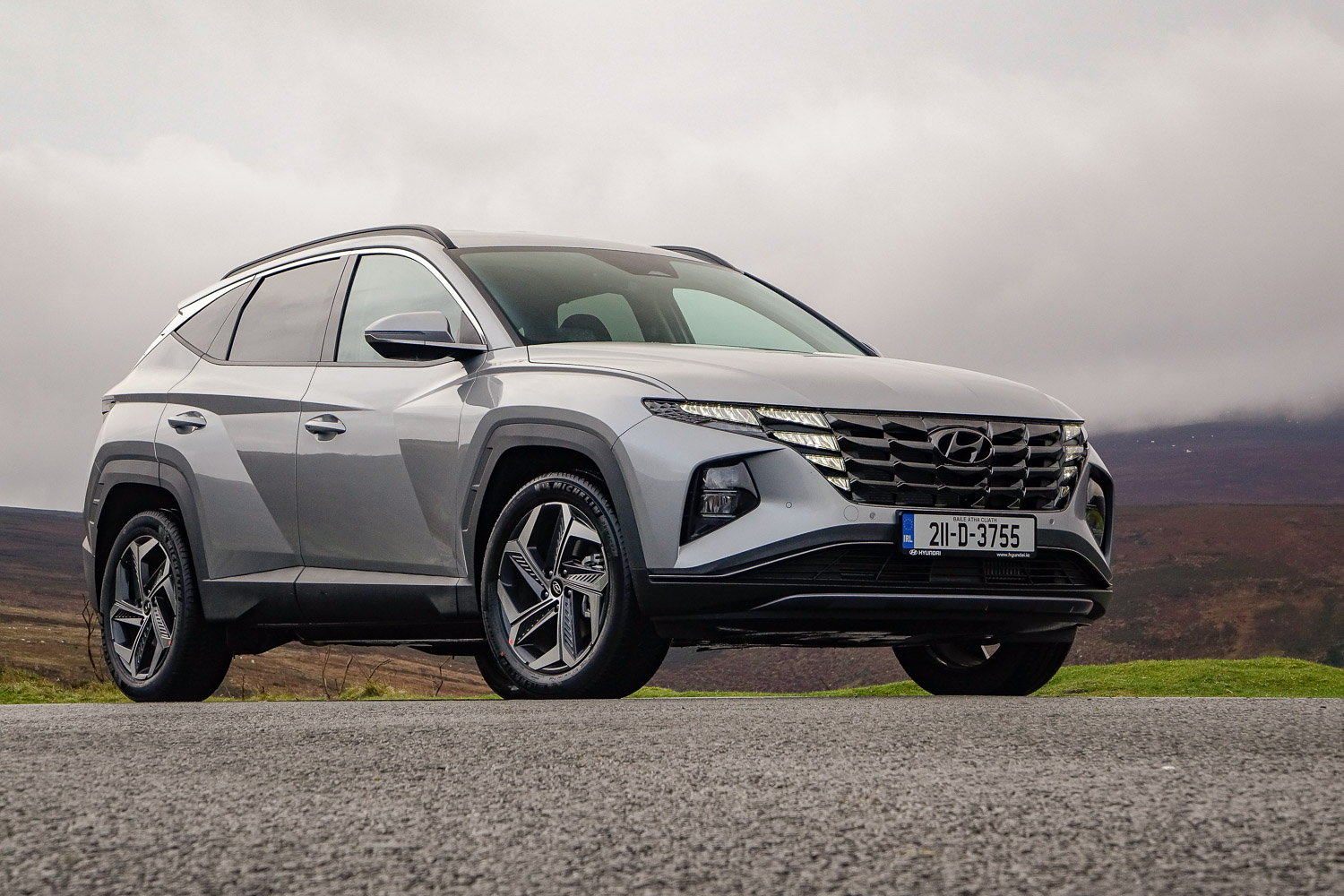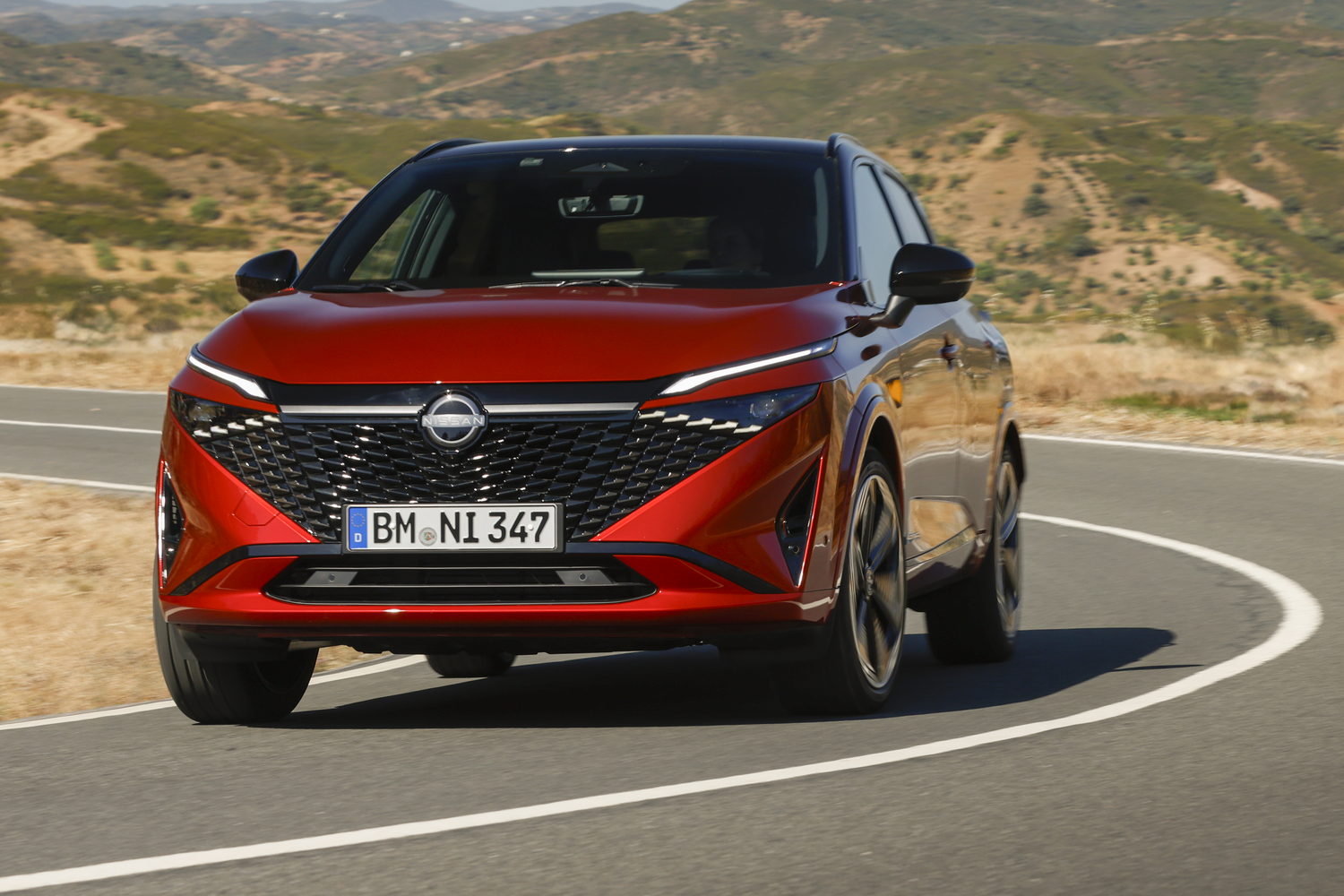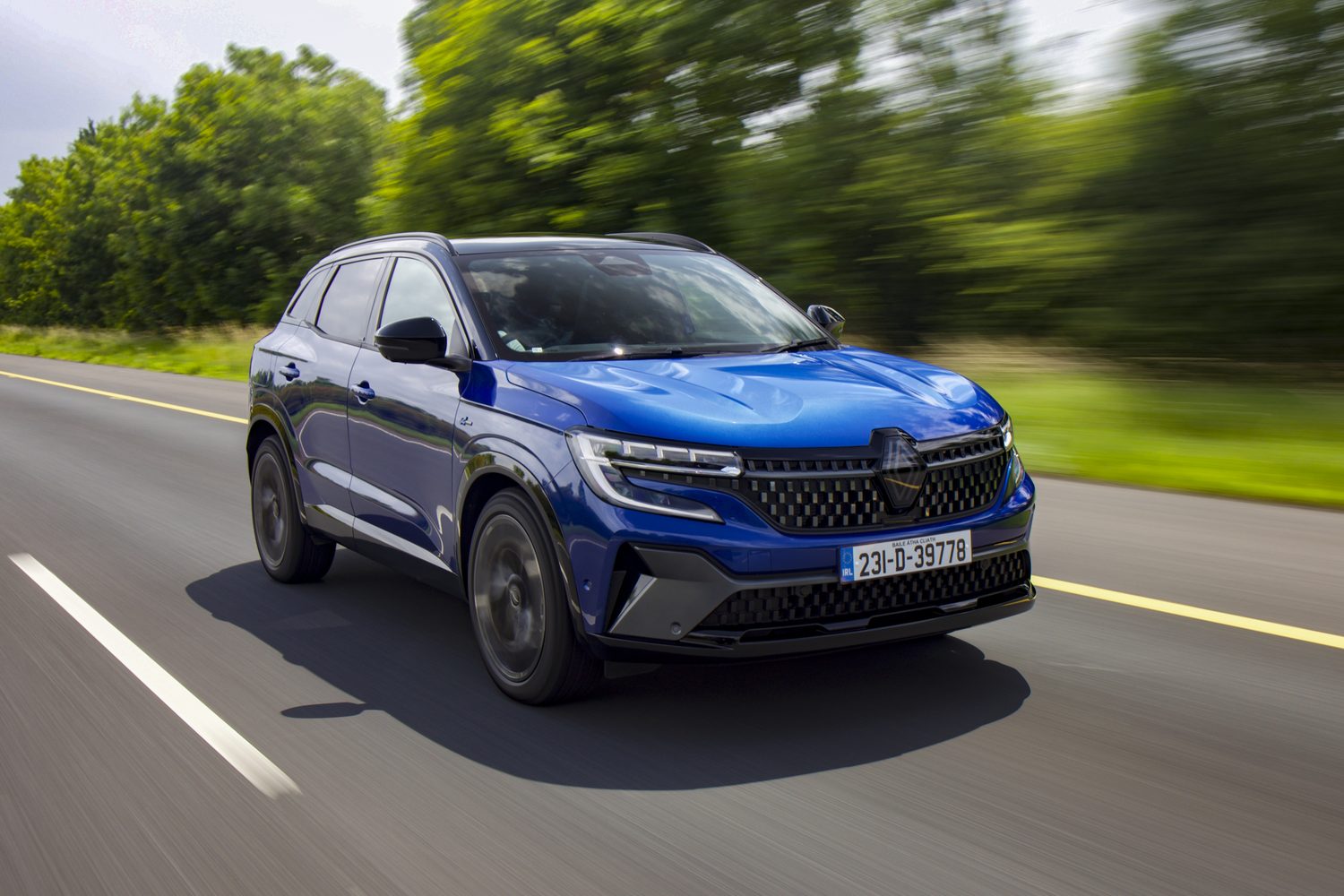A decade is a long time in the new-car market and looking back at the original Peugeot 3008 (2008-2016), it’s hard to imagine that the newly launched third-generation has evolved from the same model line. Where the original was a dumpy, awkward-looking family car that was a mix of MPV and SUV, the latest is a sleek coupe-SUV with an equally stylish cabin.
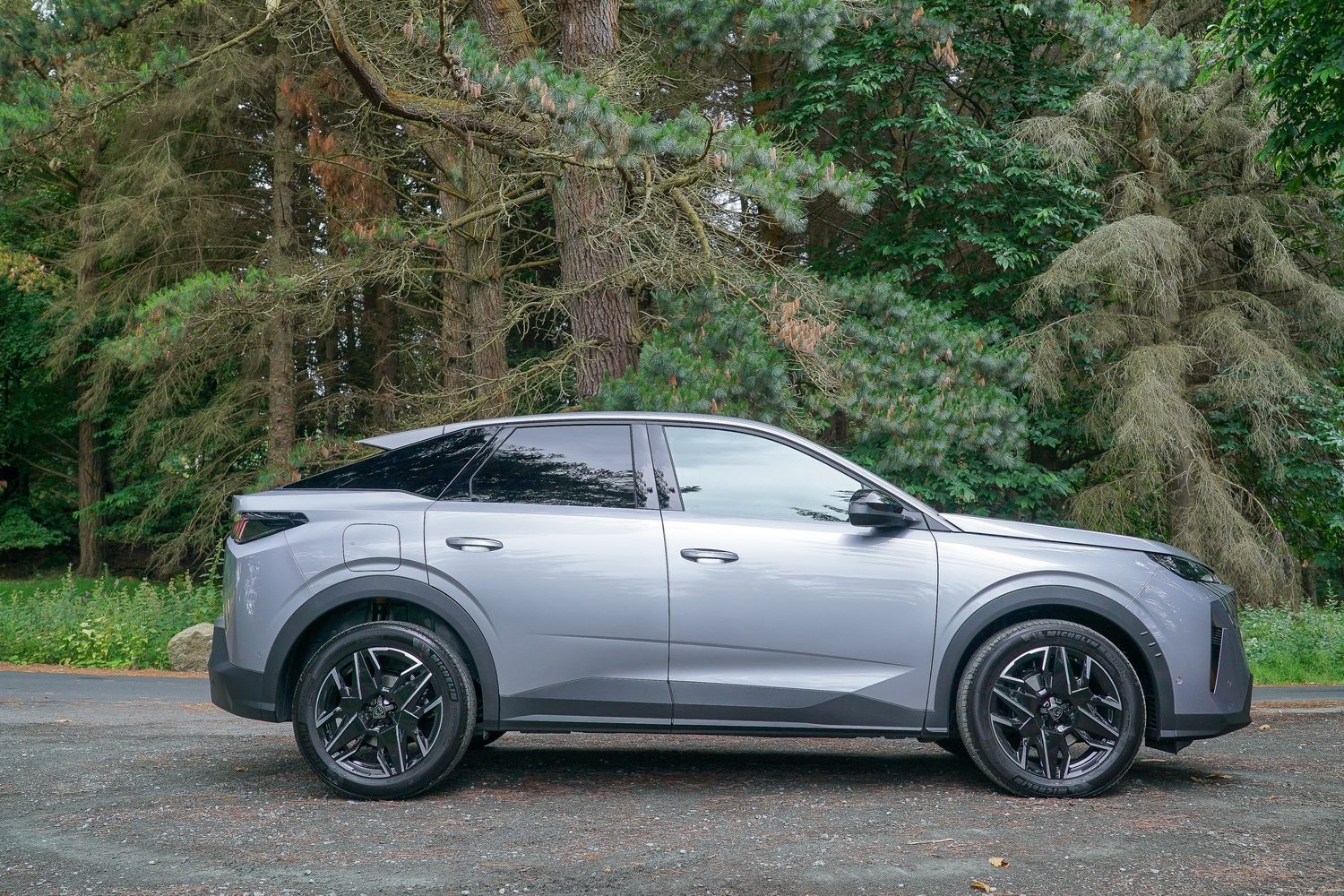
We’ve already sampled the electric E-3008 at the car’s international launch in France, but now that the newcomer has landed in Irish showrooms, we’ve had a chance to drive the petrol-electric hybrid 3008 in Allure specification, too.
How much is the Peugeot 3008 in Ireland?
The Peugeot 3008 range starts from €43,965, which is for the E-3008 once government incentives are included, while the hybrid model tested here costs slightly more, at €43,995. This means there’s effectively price parity between electric and hybrid versions at the entry point to the lineup.
We say entry, but the Allure model is still a sharp-looking and well-equipped car. There’s a smattering of gloss black exterior trim, 19-inch alloy wheels of different designs for the hybrid and EV, dark-tinted rear windows, LED lights front and rear, keyless entry and starting, two-zone climate control, LED cabin lighting, heated mirrors and part-synthetic-leather upholstery.
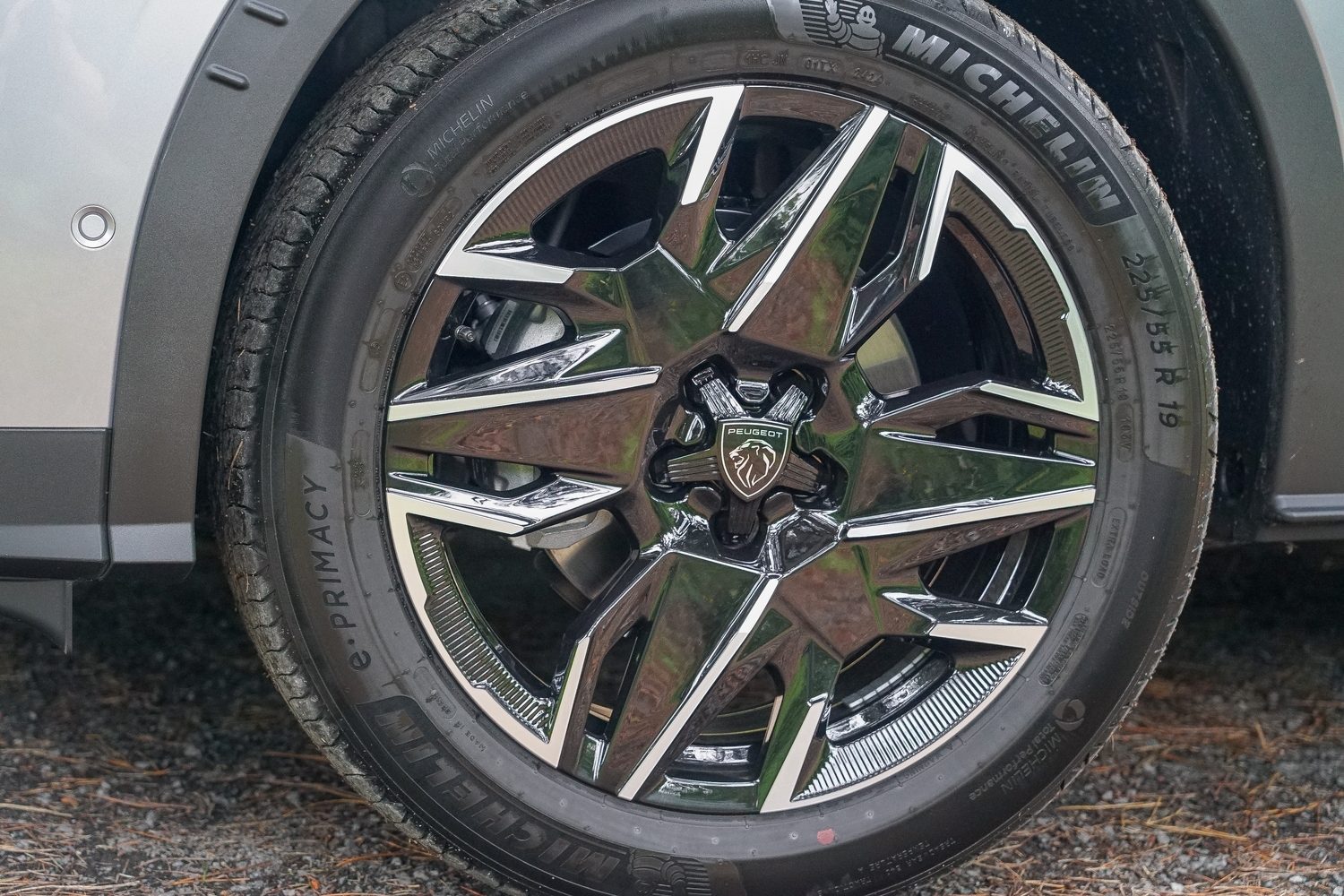
Infotainment is managed by a widescreen display running Peugeot i-Connect, which features over-the-air map updates, Bluetooth, wireless smartphone connectivity, a six-speaker stereo and wireless phone charging. The main addition for the E-3008 is a heat pump to help take the strain off the drive battery in cold weather.
GT trim is the higher spec level, costing €4,000 extra for the hybrid and a €5,830 step up for the E-3008 (due to tapering of the EV incentives for cars costing more than €40,000). The upgrades include pixel-LED headlights with adaptive main beam and a unique taillight design, plus Peugeot shield badges are added to the front wings. The electric model adds wheelarch trims finished in gloss black instead of matte, while 20-inch wheels are included as well.
The digital display has a vast 21-inch ‘floating’ screen (technically two screens side-by-side) and TomTom navigation and voice control. There’s eight-colour LED ambient lighting, a heated steering wheel and front seats, and the upholstery features tasteful Alcantara trim.
For now, the sole electric E-3008 option features a 73kWh battery feeding a 210hp electric motor driving the front wheels. Its range is quoted as 527km and charging from a DC source of 160kW can take the battery from 20 to 80 per cent charge in half an hour in theory. A longer-range version of the E-3008 is on the cards for the future, reportedly with up to a 700km range.
A look inside the Peugeot 3008
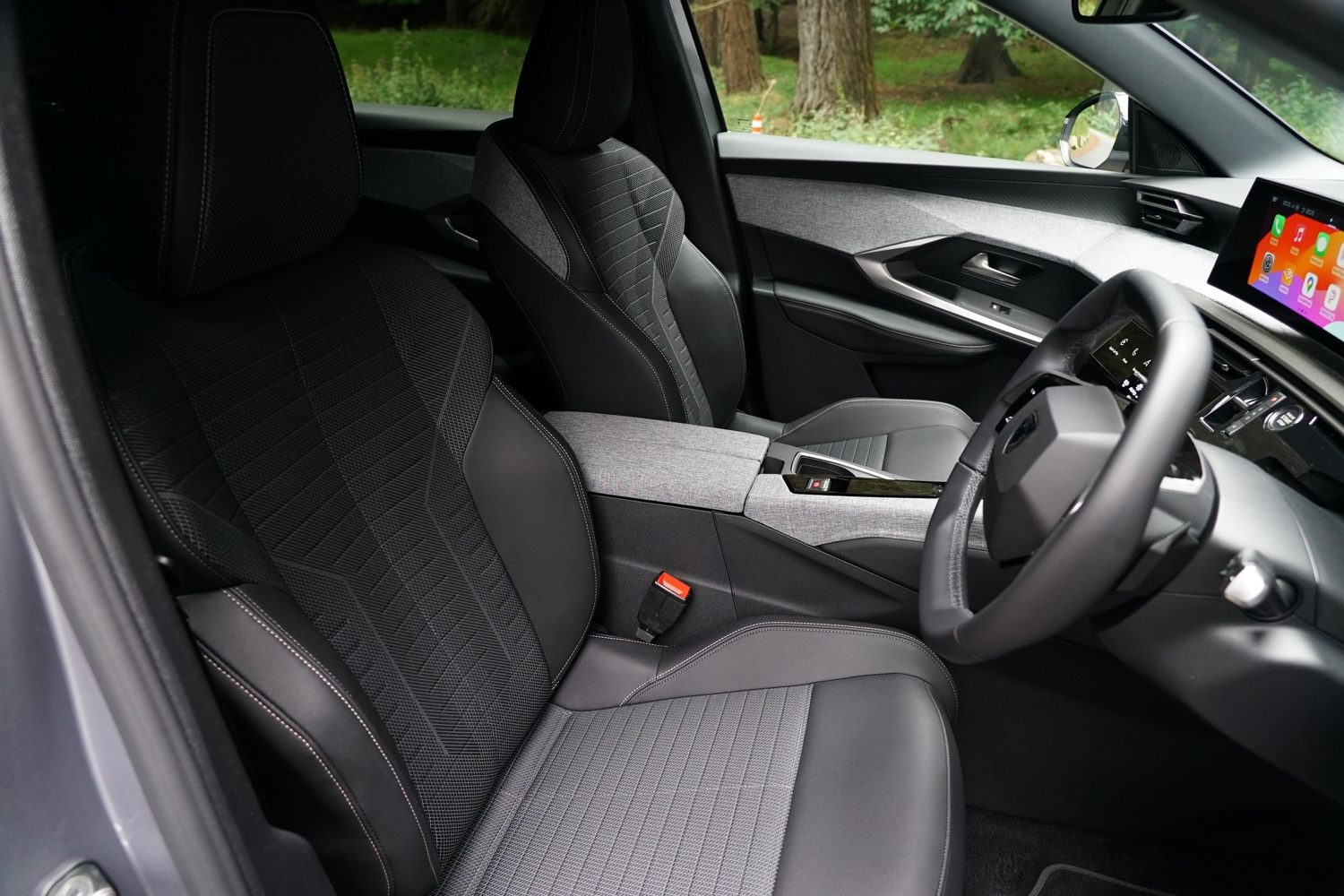
Peugeot has made a distinct move upmarket in recent years when it comes to cabin quality, and the first model to really demonstrate this was the previous-generation 3008. The new car moves things on even further, with classy materials and an eye-catching layout. We particularly like how the digital screens appear to float above the surface beneath.
The dashboard features fabric-effect trim spreading out from the dashtop to the doors, while a split-level centre console creates two zones, with the upper section featuring drive controls, and the lower part incorporating storage that is accessible to the front-seat passenger. On that side of the centre console are two cupholders and an interesting, covered cubby with loads of storage space in it, plus USB-C ports.
Peugeot’s i-Cockpit layout has been reinvented. This sees the dials (in this case on a digital screen) set high on the dashboard, effectively turning them into a head-up display, with a small steering wheel featuring a flattened top so you can see above the rim. It’s not a setup that every driver will be able to get comfortable with - it could demand a compromise in your driving position to help you see the dials - but it’s better to get along with here than in some of Peugeot’s smaller models.
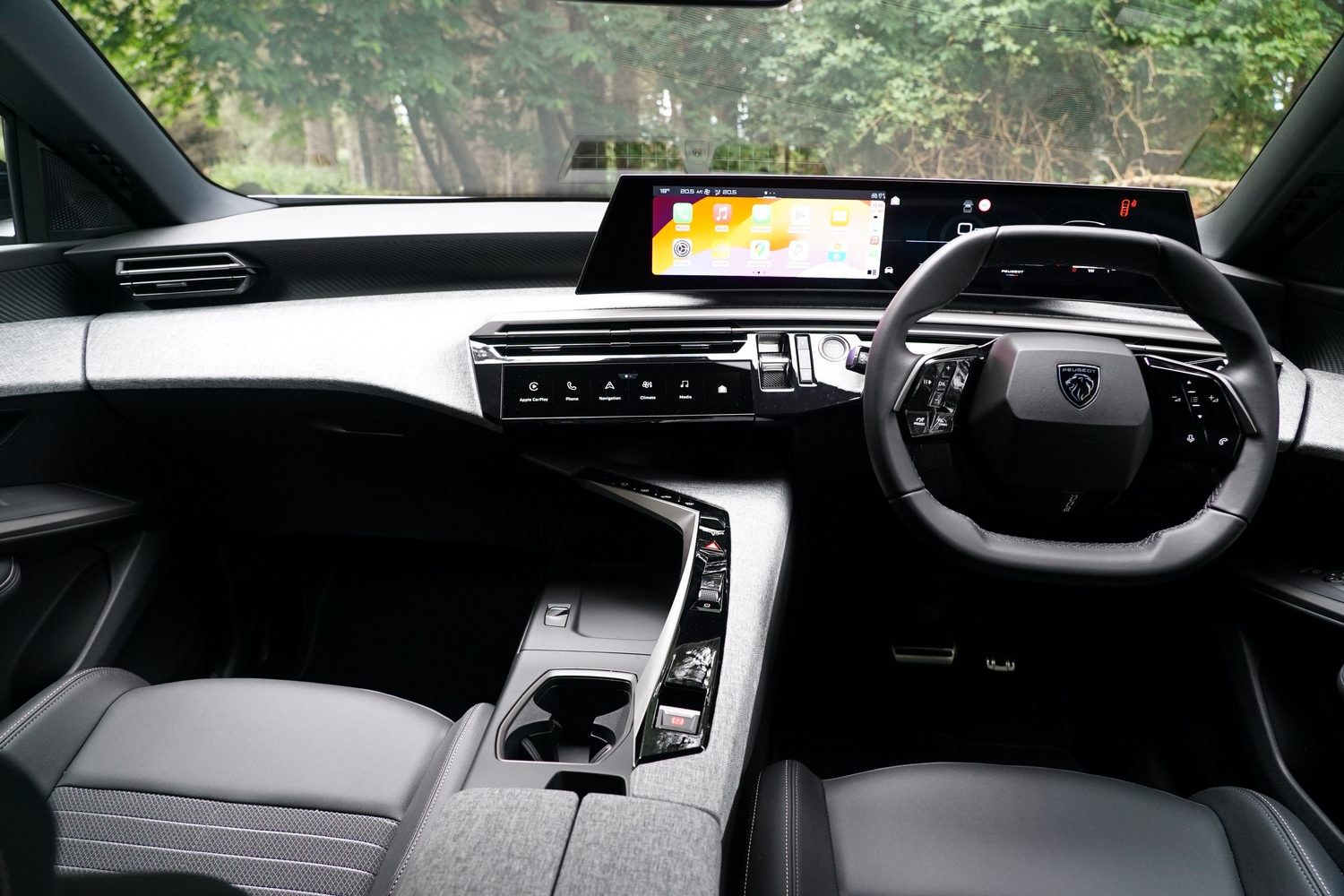
The coupe-SUV body looks as if it will compromise cabin space, but the interior dimensions are similar to the outgoing 3008’s. There’s a 520-litre boot, which is a decent size and features a split-level floor so you can create hidden storage. Fold the back seats down and space rises to 1,480 litres.
On board tech
The 3008’s i-Cockpit display is made up of two screens side-by-side, with the touchscreen controlling the majority of functions. The drive selector and engine-start button are set high on the dash next to the air vents, while below these are a set of ‘iToggle’ shortcut controls.
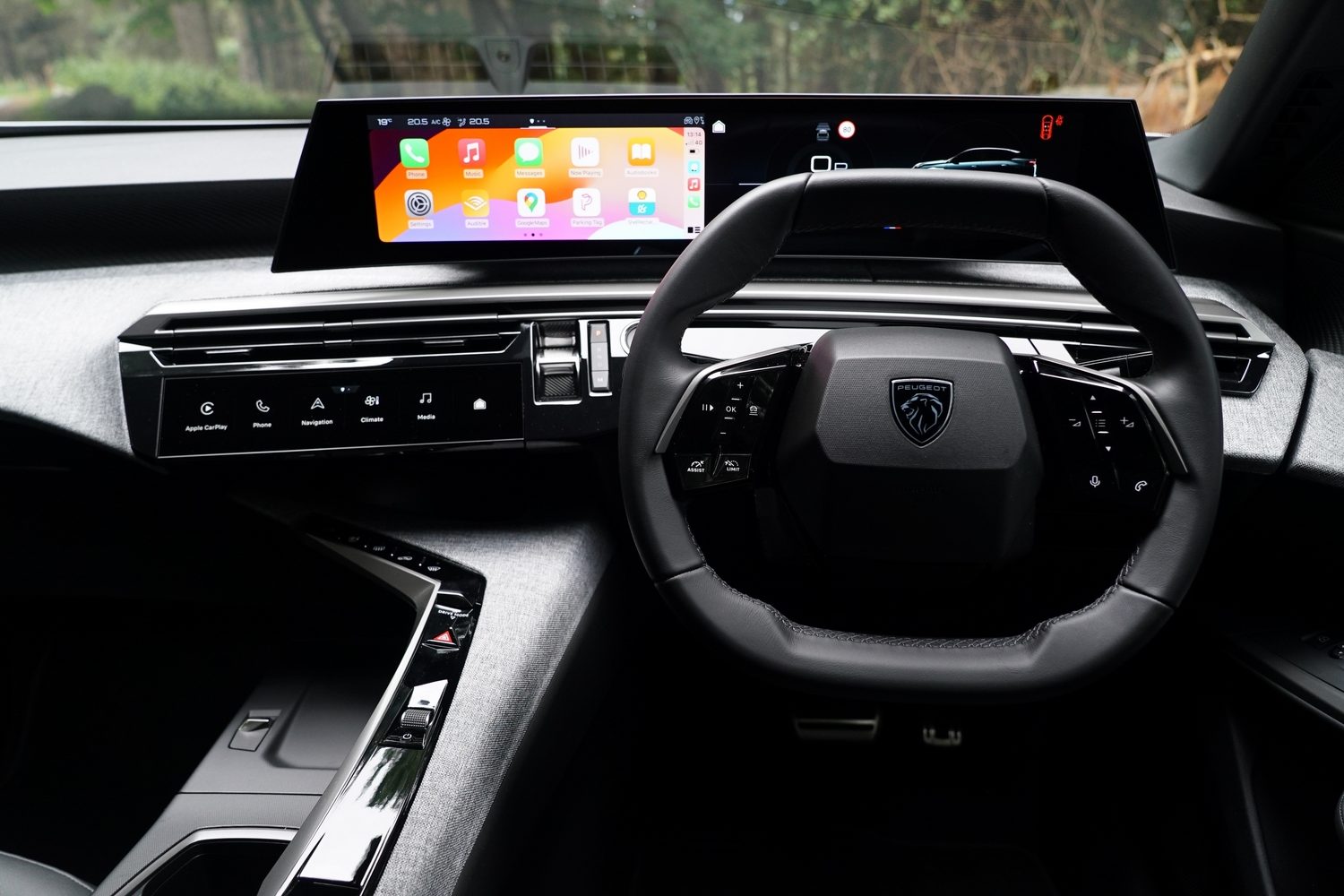
These can be programmed for quick access to different settings, although the main controls still reside within the touchscreen. It’s a handy solution if you’re using Apple CarPlay or Android Auto, because these take up the whole screen, so a quick press of a toggle can call up the climate controls, for example. Usefully, they’re really responsive, too.
How safe is the Peugeot 3008?
Safety equipment comprises six airbags, autonomous emergency braking, traffic sign recognition, lane assist and blind-spot monitoring, plus front and rear parking sensors, which are as useful to protect unseen pedestrians when manoeuvring as they are for preventing unwanted parking scrapes and dings.
There’s more safety kit on GT trim, with the addition of adaptive cruise control with traffic jam assist, rear cross-traffic alert and 360-degree cameras to give a plan view of the car’s surroundings.
The new 3008 has yet to be assessed by Euro NCAP.
How many child seats can I fit in the Peugeot 3008?
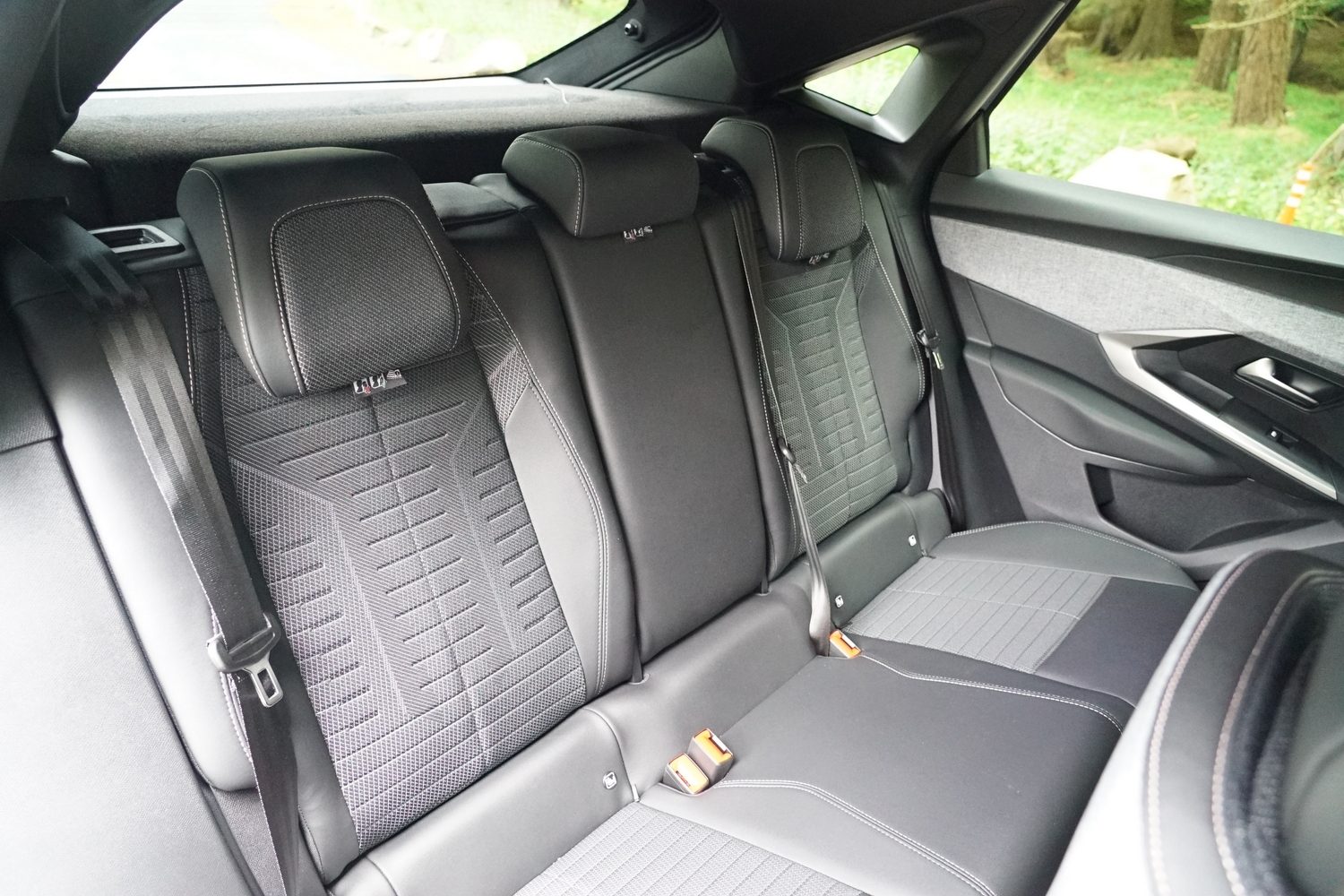
The sloping roof of the new 3008 means headroom is a little compromised, and also means that access to the back seats can be a bit trickier when trying to strap kids in. Peugeot fits two sets of ISOFIX child seat mounts with top tethers on the outer rear seats, but while there’s an airbag cut-off switch for the front passenger seat, there aren’t any ISOFIX mounts there. It’s unlikely you’d manage to squeeze a third rear-facing child seat into the back between the outer two (using its seatbelt), but the space there is larger than average for this class of car so it may be possible to fit in a slender booster. There’ll be no problem fitting big buggies in the spacious boot.
Driving the 3008
The mild-hybrid powertrain is based on Peugeot’s 1.2 ‘PureTech’ three-cylinder turbocharged petrol engine. It makes up to 136hp and is connected to a six-speed twin-clutch gearbox - which replaces the eight-speed auto that has previously been used with this engine. It’s joined by a 15.6kW electric motor (that’s 21hp) and a modest 0.89kWh battery, which indicates that it can’t run on electric power at high speeds or for long distances. Nonetheless, the motor helps the engine out at times, unobtrusively assisting with moving off from rest for example. Peugeot reckons the engine can be off for up to 50 per cent of urban driving.
As with all three-cylinder engines, this one is smooth with an off-beat thrum when pushed. It’s quiet on the motorway - as is the car in general - and provides adequate performance when required. This isn’t a fast car by any measure, but neither does it feel underpowered in day-to-day driving.
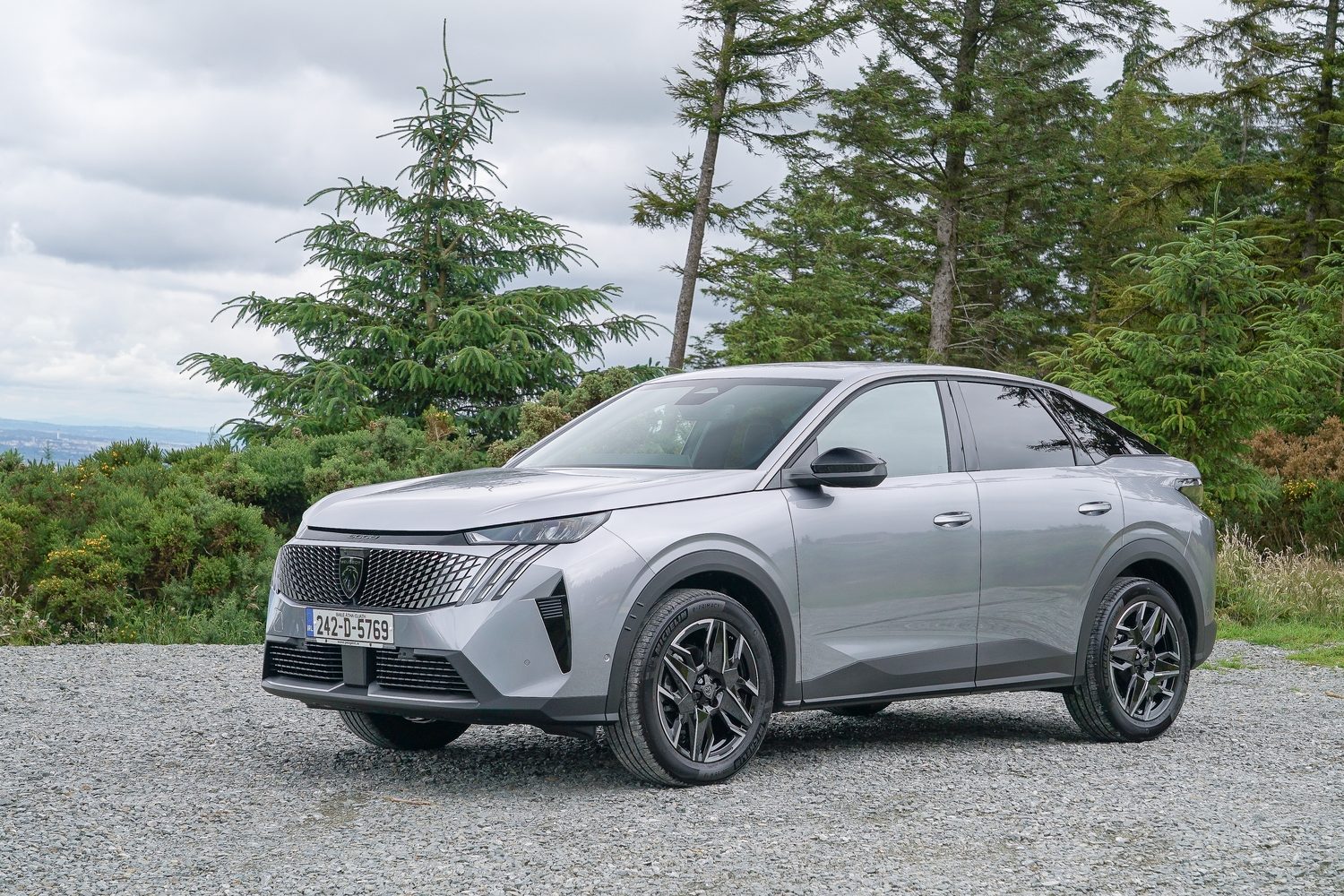
Likewise, the chassis has been developed to give a balance between comfort and body control, without standing out in either of those areas. It’s competent at all times and the driving controls are light and easy to modulate. Keen drivers don’t generally seek out cars such as this in any case, though the small steering wheel does make the 3008 feel agile, so it’s not without some appeal. The Eco, Normal and Sport driving modes tweak the power steering assistance and throttle response, too.
How economical is the Peugeot 3008?
Officially, the hybrid 3008 uses 5.5 litres of fuel per 100km, which is competitive with hybrid-powered rivals. Combine this with a 55-litre fuel tank, and you should in theory be able to travel up to 550km between fills. In our time with the car, in which we drove on a variety of roads (but didn’t spend longer than 15 minutes on the motorway at any one time), we saw an average of 6.5 litres/100km.
The reasons you’d buy a Peugeot 3008
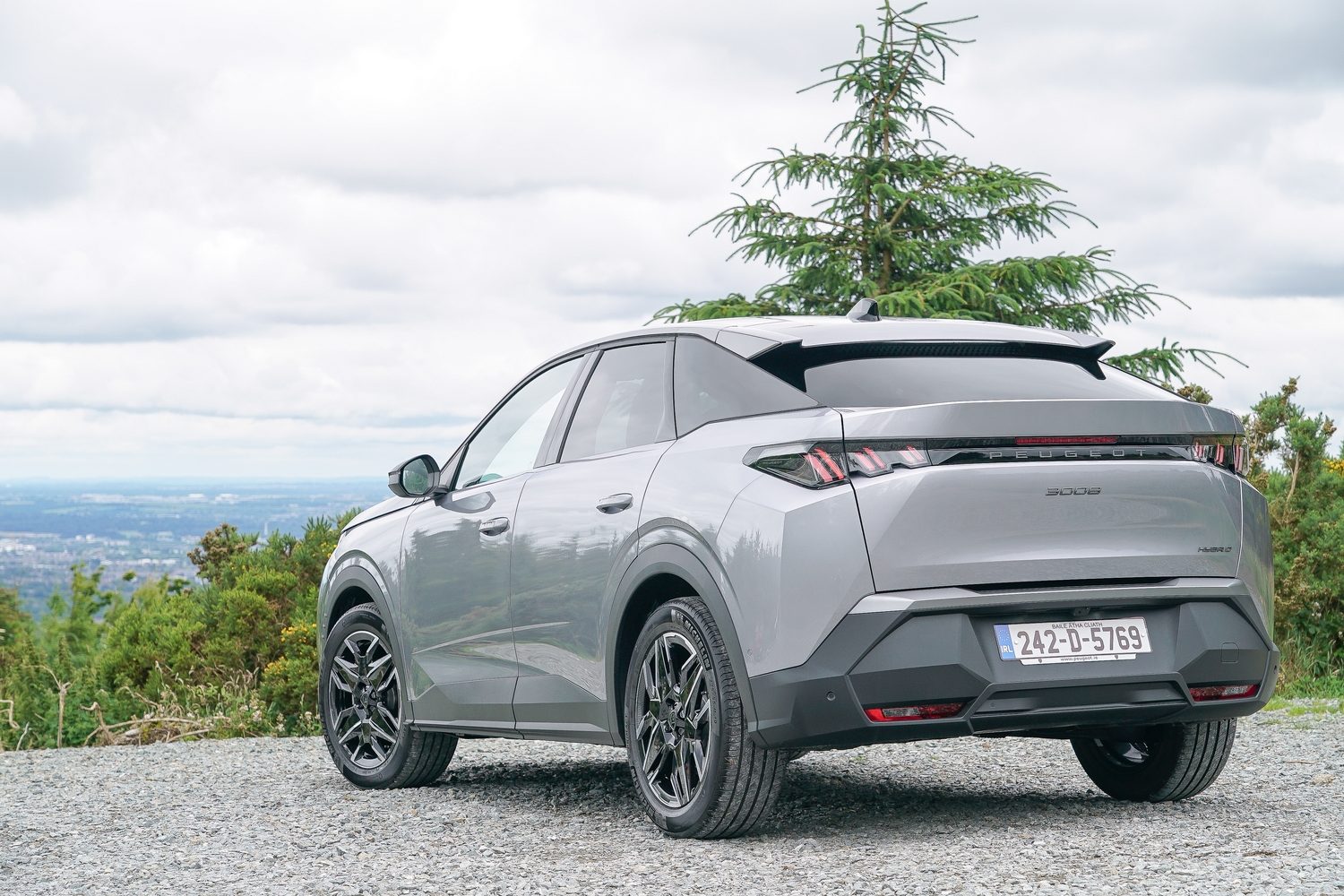
Although Peugeot has seemingly reinvented the 3008 as a coupe-SUV, it’s no less practical than before in reality and can easily double up as a family car. If you need more seating or space, then there’s a new Peugeot 5008 to choose instead. But now the 3008 appeals as much to the heart as the head thanks to its newfound style outside and in. At the same time, Peugeot has upped its game when it comes to interior ambience and quality, using an interesting mix of materials and a unique layout to differentiate the 3008 from the dozens of other SUVs and crossovers in the sector vying for buyers’ attention. The toughest decision will be choosing from hybrid or electric power.
Ask us anything about the Peugeot 3008
If there’s anything about the Peugeot 3008 we’ve not covered, or you’d like advice in choosing between it and other vehicles, you can avail of our (completely free) expert advice service via the Ask Us Anything page.

